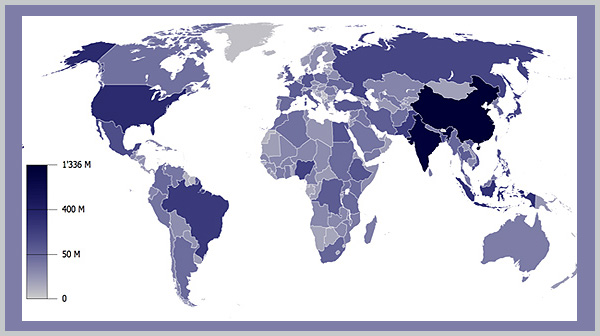
Spotlight on Global Population and Consumption
Each year, about 90 million new people are added to the planet. This rate of growth will swell our population from today’s 5.6 billion to about 8.5 billion by 2025. At present growth rates, global population will be 40 billion by 2100. The United Nations estimates, however, that growth rates will drop and world population will be 11.2 billion by 2100. This is still more than double today’s total.
Asia and Africa are adding more people each year than are other continents, even though the percentage of people they add is not as high as in some countries. The huge number of people currently living on these continents translates into a large number of people added to the global population even with relatively low growth rates.
Global Population in Emerging Countries
For example, China’s annual growth rate is only 1.2 percent, but the country’s population base of 1.2 billion people means that there is a net increase in China’s population of 15 million people every year. Population growth in Asia and Africa puts tremendous pressure on wildlife habitat on those continents.
Population is not the only determinant of impact on the environment. The rate at which people consume resources is critical. The United States has a particularly heavy impact on resources because of its high consumption rate, even though its population is relatively low.
For example, the environmental impact of a human baby born in the United States is 35 times that of one born in India, and 140 times that of a baby born in Bangladesh.
People in developing countries understandably aspire to the same level of consumption as that of developed countries. The combination of global population growth and increased consumption rates, along with technology that allows us to exploit resources more effectively than ever before, will put intolerable pressure on the Earth’s resources.
Question for Thought:
What do you think citizens in developed countries can do to lessen their impact on the environment?
Explore:
Click here for Endangered Species Classroom Activities
Click here for Endangered Species Classroom Glossary